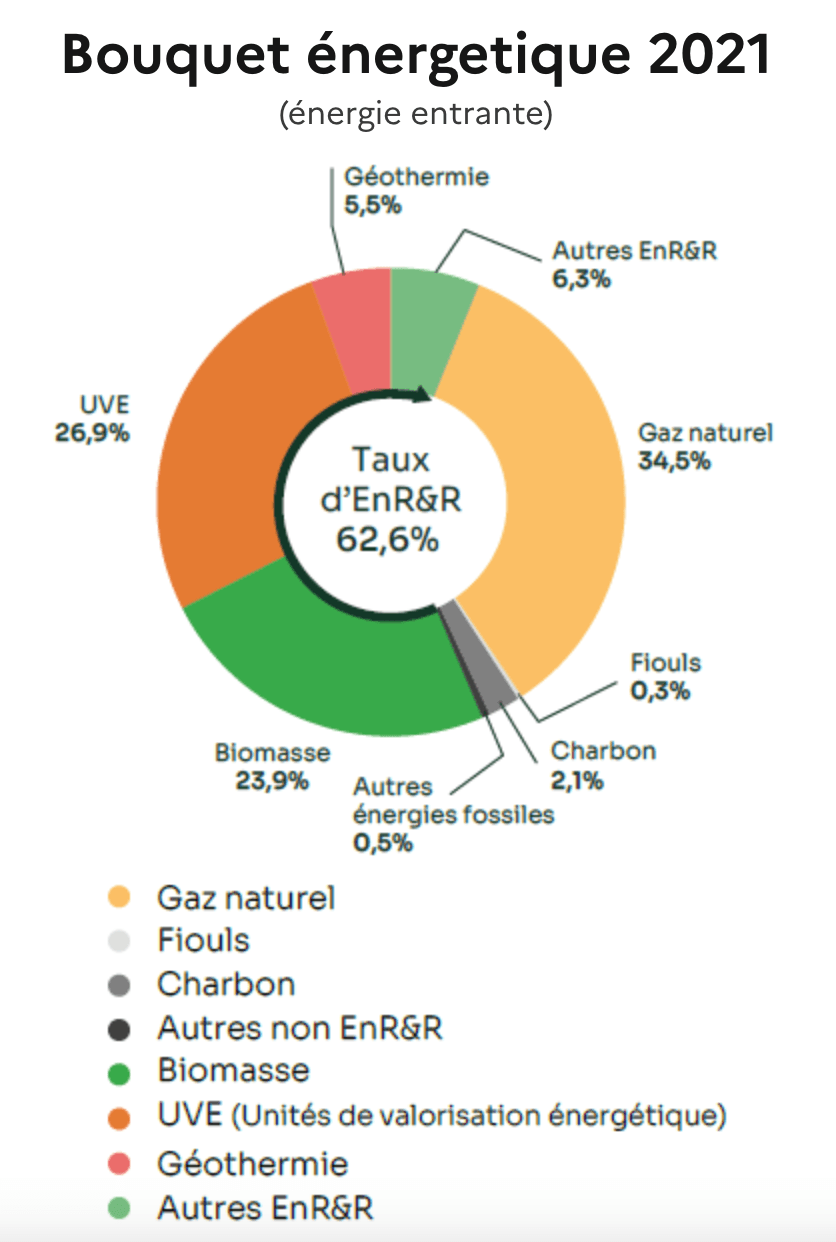Calculate your climate footprint in 10 minutes top time.
Take the test👥🏭 Connecting to a heating network
France currently has 723 district heating networks (and 28 cooling networks), most of which are located in major urban centres. This heat mainly supplies residential and commercial buildings (91%) and heats around six million people.
Connecting individual homes to a heating network is still rare, but not impossible.
To find out where to get information and how to connect, see this article.
Notes
A heating network is a system of pipes that allow heat produced locally and mainly from renewable and recovered energy sources to be conveyed to a group of buildings locally produced heat, mainly from renewable and recovered energy, to a group of buildings.
It is an ecological and economical alternative to replace gas or oil boilers, it is an ecological and economical alternative to replace gas or oil boilers, both for collective housing buildings (condominiums, social housing) and for tertiary buildings.
Nevertheless, being connected to a heating network is not as simple as subscribing to an electricity contract. Indeed, the feasibility of the connection depends on several technical conditions.
First of all, the connection is made for a whole building: it is not possible to connect only your apartment. Secondly, it is necessary to check that there is a heating network near the building, and then to study the heating infrastructure within the building (a building equipped with a collective heating system will allow a connection at lower cost)
Regarding the impact on the climate, it is important to know that in general, a heating network is supplied by local renewable or recovered energy sources (62% on average on a national scale), i.e., via household waste incineration, biomass combustion, geothermal energy... (as shown in the figure below) which considerably reduces the CO2 impact of the kWh of energy consumed in front of gas or fuel oil.
However, the energy mix is very variable from one network to another, some networks are still mainly powered by fossil fuels (coal, oil, gas). It is therefore important to check the RE rate of the nearest network on the France Chaleur Urbaine map, and to ask the network manager on the future evolution of the energy mix, as many networks are in the process of becoming greener...].

How is this figure calculated?
- Applicable si:
- Toutes ces conditions:
- Est un appartement
- Chauffage collectif = 'collectif'
- Une de ces conditions:
- Toutes ces conditions:
- Chauffage . gaz . présent
- Chauffage . gaz . présent
- Toutes ces conditions:
- Chauffage . fioul . présent
- Chauffage . fioul . présent
- Toutes ces conditions:
- Chauffage . citerne propane . présent
- Chauffage . citerne propane . présent
- Non applicable si:
- Une de ces conditions:
- Toutes ces conditions:
- Logement . construction . rénovation . travaux . chauffage . présent
- Logement . construction . rénovation . travaux . chauffage . présent
- Toutes ces conditions:
- Chauffage . PAC . présent
- Chauffage . PAC . présent
- Toutes ces conditions:
- Chauffage . électricité . présent
- Chauffage . électricité . présent
- (empreinte chauffage air + empreinte eau chaude sanitaire - recalcul) / habitants
To find out more about this rule in our model, run the calculation by clicking on the button below.
